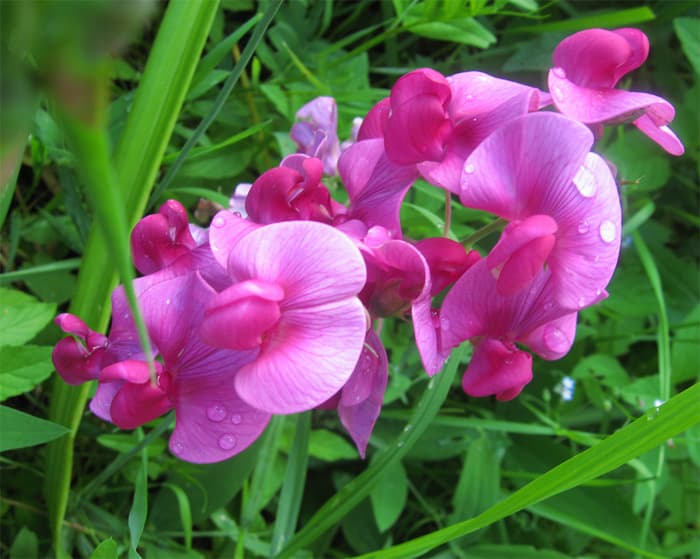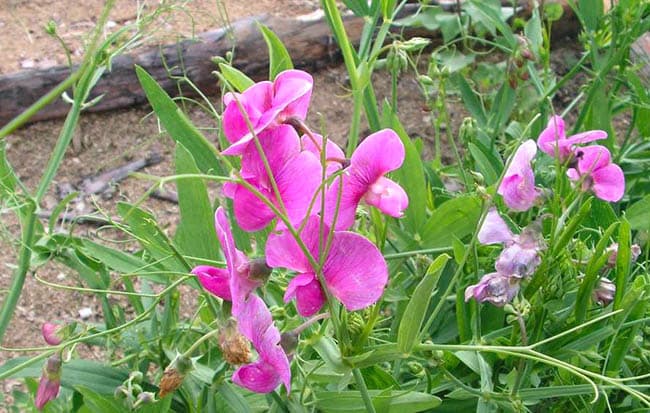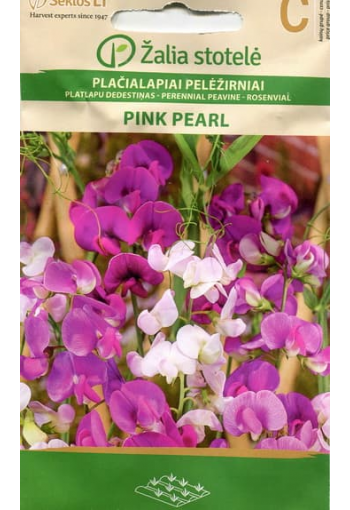Physical Characteristics.
Perennial Climber growing to 2m by 2m at a fast rate. It is hardy to zone 5 and is not frost tender. It is in flower from July to September, and the seeds ripen from August to October. The flowers are hermaphrodite (have both male and female organs) and are pollinated by Bees. It can fix Nitrogen. We rate it 1 out of 5 for usefulness. The plant prefers light (sandy), medium (loamy) and heavy (clay) soils. The plant prefers acid, neutral and basic (alkaline) soils. It can grow in semi-shade (light woodland) or no shade. It requires dry or moist soil and can tolerate drought.
Habitats and Possible Locations Meadow, Woodland, Sunny Edge, Dappled Shade, Shady Edge, Ground Cover. Cultivation details An easily grown plant, succeeding in any moderately good garden soil, whether acid or alkaline. Prefers a position in full sun but tolerates part day shade. Succeeds in dry soils and is drought tolerant when established. Grows well on dry slopes. Plants can be grown in quite coarse grass, which can be cut annually in the autumn. Plants are hardy to at least -10°c. A very ornamental plant, there are many named varieties. It is fast-growing and, when in a suitable position, can become invasive. Plants climb by means of tendrils. Resents root disturbance and can take a year or two to settle down after being moved. This species has a symbiotic relationship with certain soil bacteria, these bacteria form nodules on the roots and fix atmospheric nitrogen. Some of this nitrogen is utilized by the growing plant but some can also be used by other plants growing nearby. Propagation Pre-soak the seed for 24 hours in warm water and then sow in early spring in a cold frame. When they are large enough to handle, prick the seedlings out into individual pots and plant them out in the summer. If you have sufficient seed, then it can also be sown in situ in mid spring. Division in spring. It may not transplant well so care should be taken.


Eng.: Perennial sweet pea, perennial peavine, broad-leaved everlasting-pea. Suom.: Ruusunätkelmä, tarhanätkelmä. Sven.: Rosenvial, rosenluktärt.
* Plants also have their own "Internet".
German scientists have discovered that plants for communication with each other have created no less a global system than the Internet.
A huge network of intertwined roots helps plants communicate with each other. Plants transmit information to each other about the coming drought, about the approaching pests, which allows them to prepare in advance for adverse conditions.
Plants transmit information about the onset of drought or the appearance of the first pests in "encrypted" form through chemicals that they release into the soil, then absorbing them with water.
It is possible that plants have more receptors than animals and humans. Plants can transmit electrical signals at a speed of 0.5 centimeter to centimeter per second. It is much slower than nerve impulses in the human body. But this speed is quite enough for plants. Some plant species even manage to defend themselves with a poison that kills their enemies ...
Have you ever wondered how the antennae of peas without eyes "see" a twig or branch from afar, which they need to grab onto in order to continue growing?
In tomatoes, three days before the cyclone, a red skin thickens on the fruits so that the pulp and seeds are not damaged.
In the fight against pests, tobacco increases the nicotine content in one gram of green mass as much as it contains in a hundred strong cigarettes without a filter ...
Plants are familiar with the feeling of pain, and the feeling of fear, and sympathy, and the desire for beauty: it is not for nothing that good gardeners recommend talking more with flowers!











